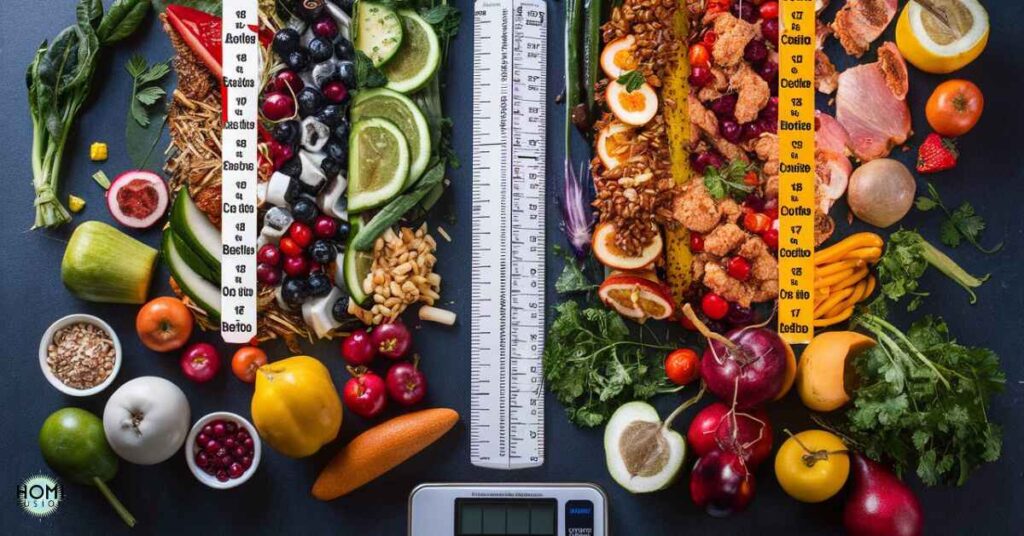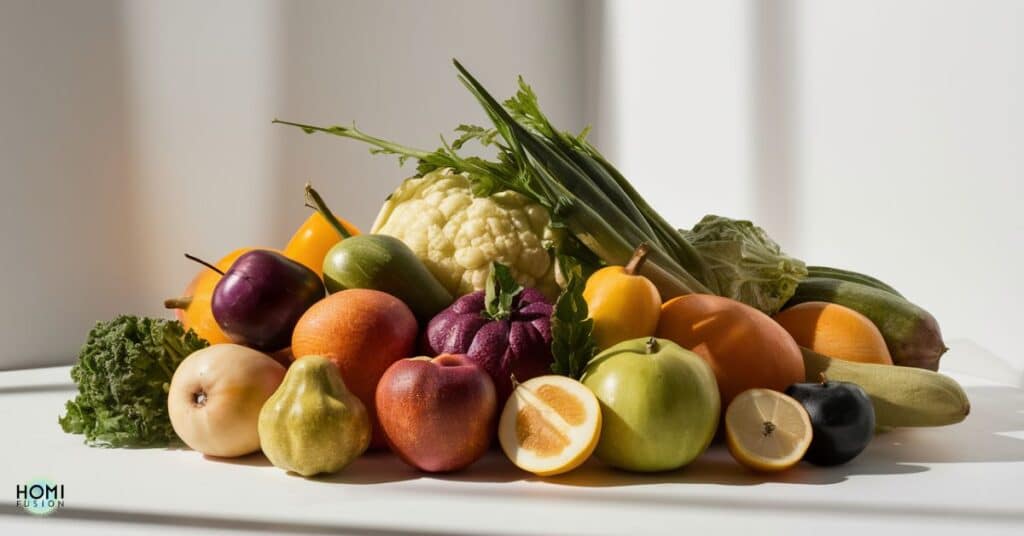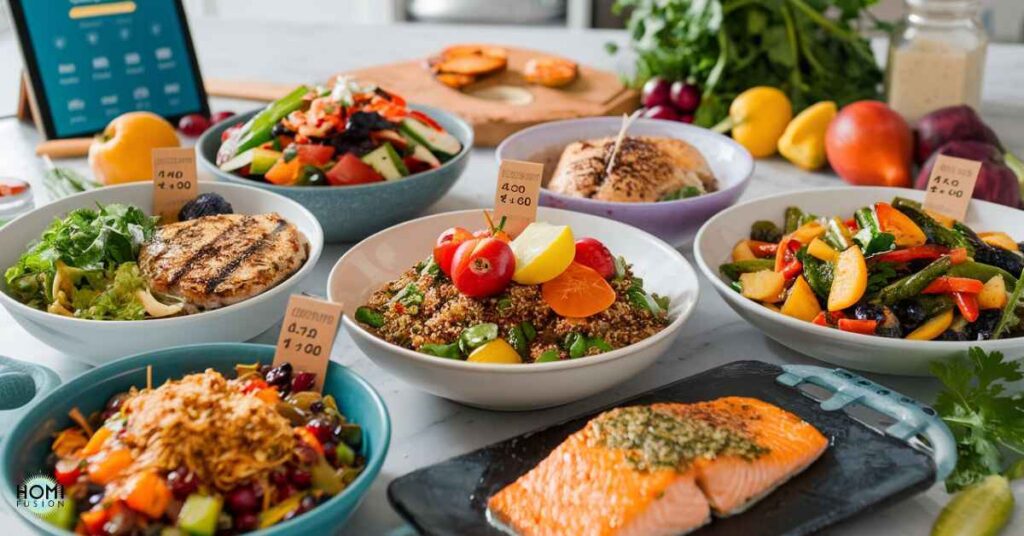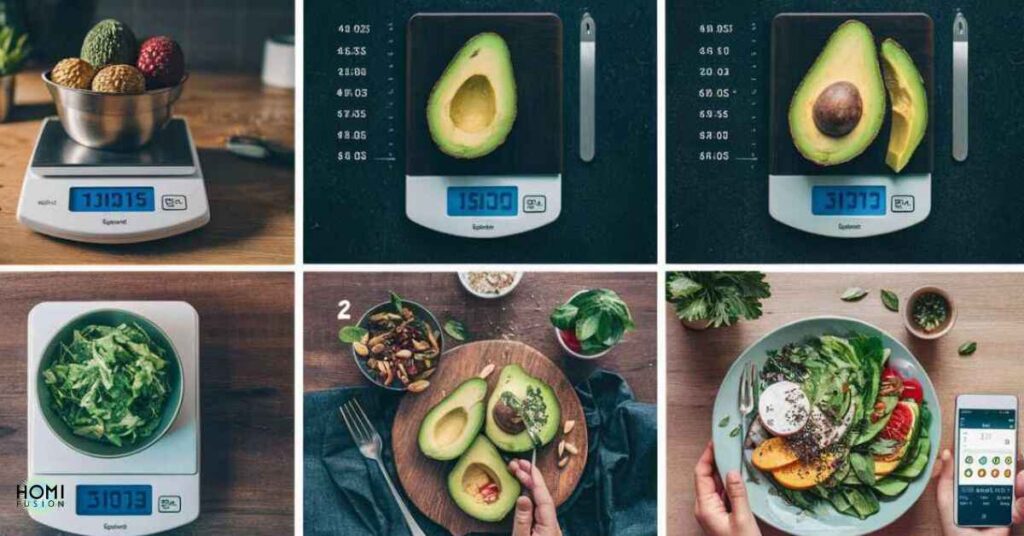Maintaining a healthy diet and achieving your fitness goals often revolve around understanding the caloric content of the foods you consume. While dining out or relying on pre-packaged meals can simplify calorie tracking, measuring calories in home-cooked meals can be a challenging task.
Fortunately, with the right tools and techniques, you can accurately measure the calories in your homemade dishes. This empowers you to make informed dietary choices.
In this comprehensive guide, we’ll explore various methods to measure calories in food at home. This ensures that you have the knowledge and resources to take control of your nutritional intake.
Utilise a Food Scale: Precision in Portion Control
Investing in a high-quality food scale is an essential step in accurately measuring calories in your home-cooked meals. Unlike guessing or relying on visual estimates, a food scale provides precise weight measurements, which are crucial for calculating caloric values.
By weighing your ingredients before and after cooking, you can account for any changes in weight due to moisture loss or absorption, ensuring accurate calorie calculations.
Additionally, a food scale allows you to measure portion sizes with precision, helping you avoid overconsumption or underconsumption of calories. Whether you’re tracking macronutrients (proteins, carbohydrates, and fats) or simply monitoring your overall calorie intake, a food scale is an indispensable tool for maintaining portion control.
Measure Ingredients Before vs After Cooking
The process of cooking can significantly alter the weight and nutritional composition of ingredients. For example, meats tend to lose moisture and shrink during cooking, while grains and legumes may absorb water and increase in weight. To account for these changes, it’s essential to measure the weight of your ingredients both before and after cooking.

By weighing raw ingredients before cooking, you can calculate the caloric content based on their nutritional information. Then, by weighing the cooked dish, you can adjust the calorie count to reflect any changes in weight and moisture content. This approach ensures that you’re accounting for the actual caloric value of the dish you’re consuming. It helps avoid relying on potentially inaccurate estimates.
Read Nutrition Labels
When cooking with packaged or processed ingredients, reading nutrition labels is crucial for accurate calorie measurement. Nutrition labels provide detailed information about the caloric content, macronutrient breakdown and serving sizes of the product. By carefully examining these labels, you can determine the precise caloric value of the ingredients you’re using in your recipes.
Remember to pay attention to serving sizes and adjust your calculations accordingly. Many packaged foods list nutrition information for a single serving, so you’ll need to multiply the values based on the amount you’re using in your dish.
Use Online Tools and Apps
In today’s digital age, numerous online tools and mobile applications are available to assist you in measuring calories in your home-cooked meals. These resources often feature extensive food databases with detailed nutritional information, making it easier to calculate the caloric content of your dishes.

Popular apps like MyFitnessPal, Cronometer, and LoseIt offer user-friendly interfaces. They allow you to log your meals, track your calorie intake, and even scan barcodes for quick nutritional data entry. Additionally, many of these apps provide recipe analysis tools, enabling you to input your ingredients and obtain detailed calorie and macronutrient breakdowns for your homemade dishes.
Read this blog:
Which Fairytale Was The First Gingerbread House Inspired By?
Reference Cookbooks and Online Recipes
Cookbooks and online recipes can be valuable resources for measuring calories in your home-cooked meals. Many modern cookbooks and recipe websites now include nutritional information alongside their recipes. This makes it easier to track the caloric content of the dishes you prepare.
When referencing these resources, be sure to adjust the calorie and macronutrient values based on any modifications you make to the recipe. Additionally, pay attention to serving sizes and adjust your calculations accordingly if you plan to consume a larger or smaller portion.
Invest in a Calorie Counting Book
For those who prefer a more traditional approach, investing in a comprehensive calorie counting book can be an excellent resource. These books typically provide detailed nutritional information for a wide range of foods, including raw ingredients, packaged products and common dishes.
Calorie counting books can be particularly useful when cooking with fresh, whole ingredients or when preparing traditional family recipes. By cross-referencing the nutritional values in the book with the ingredients and quantities used in your dish, you can accurately calculate the caloric content. This method helps ensure precision in measuring the calories in your home-cooked meal.
Homemade Recipes: Calculate Ingredient Calories

When preparing homemade recipes without access to pre-calculated nutritional information, you’ll need to calculate the caloric content based on the individual ingredients. This approach involves:
Weighing each ingredient and noting its quantity.
Referencing a reliable source (such as a calorie counting book or online database) to determine the caloric value per unit of measure (e.g., calories per gram or ounce) for each ingredient.
- Multiplying the caloric value by the quantity of each ingredient used in the recipe.
- Summing the caloric values of all ingredients to obtain the total calorie count for the dish.
While this method can be time-consuming, it ensures accurate calorie measurements for your homemade recipes. This accuracy enables you to make informed dietary choices based on reliable nutritional information.
Maintain a Food Diary: Track Your Intake
Maintaining a food diary is an effective way to track your calorie intake and ensure that you’re adhering to your dietary goals. By recording the foods you consume throughout the day, along with their respective calorie values, you can monitor your overall calorie intake and make adjustments as needed.
Food diaries can be kept in various formats, such as a physical notebook, a spreadsheet, or a dedicated mobile app. Regardless of the method you choose, consistency is key. Be sure to log your meals, snacks, and beverages as soon as possible after consumption to ensure accurate tracking.
Consult a Registered Dietitian

If you find yourself struggling with measuring calories or developing a balanced diet plan, consulting with a registered dietitian can be invaluable. These healthcare professionals possess extensive knowledge and expertise in nutrition, calorie counting, and meal planning.
A registered dietitian can provide personalized guidance tailored to your specific needs and goals. They can assess your current dietary habits and recommend appropriate calorie targets. Additionally, they can guide you through the process of measuring and tracking your calorie intake effectively. They can also offer valuable insights into nutrient-dense food choices and help you develop a sustainable, well-rounded eating plan.
Calculating Calories for Different Types of Dishes
While the general principles of calorie measurement remain the same, certain types of dishes may require specific considerations:
Calculating Calories for Single-Ingredient Dishes
For dishes that consist of a single ingredient, such as grilled chicken breast or a baked potato, the calorie calculation is relatively straightforward. Simply weigh the ingredient, reference its caloric value per unit of measure and adjust for any changes in weight or moisture content during cooking.
Calculating Calories for Recipes
When preparing multi-ingredient recipes, you’ll need to calculate the caloric content of each individual ingredient and then sum them together. This approach involves weighing each ingredient, consulting a reliable source for its caloric value and performing the necessary calculations.
Calculating Calories in a Home-Cooked Meal
Home-cooked meals often consist of multiple components, such as a protein source, vegetables, grains and condiments. To accurately measure the calories in such meals, you’ll need to calculate the caloric content of each component separately and then add them together. This approach ensures that you account for all the ingredients and their respective caloric values.
Tips for Managing Calories and Diet
While measuring calories is an essential step in maintaining a healthy diet, it’s important to adopt a holistic approach to nutrition and overall well-being. Here are some additional tips to help you manage your calorie intake and achieve your dietary goals:
Watch Your Portion Sizes
Even with healthy, nutrient-dense foods, consuming excessive portions can lead to overconsumption of calories. Develop an awareness of appropriate portion sizes and use tools like measuring cups, spoons and food scales to ensure accurate portions.
Invest in a Digital Kitchen Scale
As mentioned earlier, a digital kitchen scale is an invaluable tool for precisely measuring ingredients and portions. It’s enabling accurate calorie calculations for your home-cooked meals.
Focus on Quality of Calories

While calorie counting is important, it’s equally crucial to consider the quality of the calories you consume. Prioritize nutrient-dense, whole foods that provide essential vitamins, minerals and fiber, rather than relying solely on calorie-dense, processed foods.
Learn to Read Labels
When purchasing packaged or processed foods, make a habit of reading nutrition labels carefully. Pay attention to serving sizes, caloric values, and ingredient lists to make informed choices.
Keep a Food Journal
Maintaining a food journal can help you stay accountable and track your calorie intake accurately. By recording the foods you consume, along with their respective calorie values, you can identify patterns. This allows you to make adjustments and stay on track with your dietary goals effectively.
Track Your Calories as Soon as Possible
To ensure accurate calorie tracking, it’s essential to log your food intake as soon as possible after consumption. Waiting too long can lead to forgetfulness or inaccurate estimates, compromising the integrity of your calorie data.
Take Advantage of Tracking Tools
Numerous mobile apps and online tools are available to assist you in tracking your calorie intake and macronutrient ratios. These tools often feature extensive food databases, barcode scanners and recipe analysis capabilities, making calorie tracking more convenient and accurate.
Pay Attention to When You Eat
The timing of your meals and snacks can influence your calorie intake and overall dietary habits. Be mindful of when you eat and aim to establish a consistent eating pattern that supports your health and fitness goals.
Don’t Obsess
While calorie counting is valuable, it’s important to maintain a balanced approach to nutrition. Avoid obsessing over every calorie and allow for occasional indulgences or deviations from your plan. Moderation and flexibility are key to developing a sustainable, healthy relationship with food.
Choose Calorie-Tracked Recipes
To simplify the process of measuring calories in your home-cooked meals, consider relying on calorie-tracked recipes from reputable sources. These recipes often provide detailed nutritional information, making it easier to plan and prepare meals that align with your calorie goals.

Measuring calories in food at home requires a combination of tools, techniques and knowledge. By following the methods outlined in this guide, you can accurately track the caloric content of your home-cooked meals. It’s empowering you to make informed dietary choices and achieve your health and fitness goals. Remember, calorie counting is just one aspect of a well-rounded approach to nutrition. It should be balanced with a focus on nutrient density, portion control, and overall lifestyle habits.
Also read:
A Guide To Choosing The Best Washing Machine: Criterion Washer Reviews
Frequently asked questions
What is the easiest way to count calories?
The easiest way to count calories is to use a mobile app that tracks food intake and provides nutritional information automatically. Alternatively, you can refer to food labels and use a simple notebook or spreadsheet to record your daily intake manually.
How many calories are in 2 eggs?
Two eggs typically contain around 140-160 calories, depending on their size and preparation method.
How many calories are in roti?
A typical roti contains around 70-100 calories, depending on its size and ingredients used. It’s a relatively low-calorie option compared to other breads.
How to count calories in rice?
To count calories in rice, measure the portion size in grams, then use a calorie tracking app or a nutritional database to find the calorie content per gram or serving size of the specific type of rice you’re consuming.
How to burn calories?
To burn calories, engage in regular physical activity like cardio exercises, strength training and high-intensity interval training. Additionally, maintain a balanced diet with portion control and stay hydrated to support your metabolism.
What is the 7 Day Challenge diet?
The 7-Day Challenge diet is a short-term meal plan designed to kickstart weight loss or healthy eating habits. It involves strict adherence to a specific set of guidelines and meal choices over the course of seven days.
How many calories should a 70 kg man eat?
A 70 kg man typically requires around 2,100 to 2,800 calories per day, depending on factors like activity level, metabolism and overall health goals. It’s best to consult with a nutritionist or use a calorie calculator for personalized recommendations.
Conclusion
Accurately measuring calories in home-cooked meals is essential for maintaining a healthy diet and achieving fitness goals. Utilizing tools like food scales, reading nutrition labels, and using online apps can greatly assist in measuring calories at home.
Consulting resources such as calorie counting books or registered dietitians can also provide valuable guidance in this process. It’s crucial to measure ingredients before and after cooking to account for changes in weight and moisture. Tracking intake consistently through methods like food diaries or mobile apps can help maintain accurate calorie measurements.
Balancing calorie counting with a focus on nutrient density and portion control is essential. This holistic approach empowers individuals to make informed dietary choices and reach their health and fitness objectives effectively by considering overall lifestyle habits.







